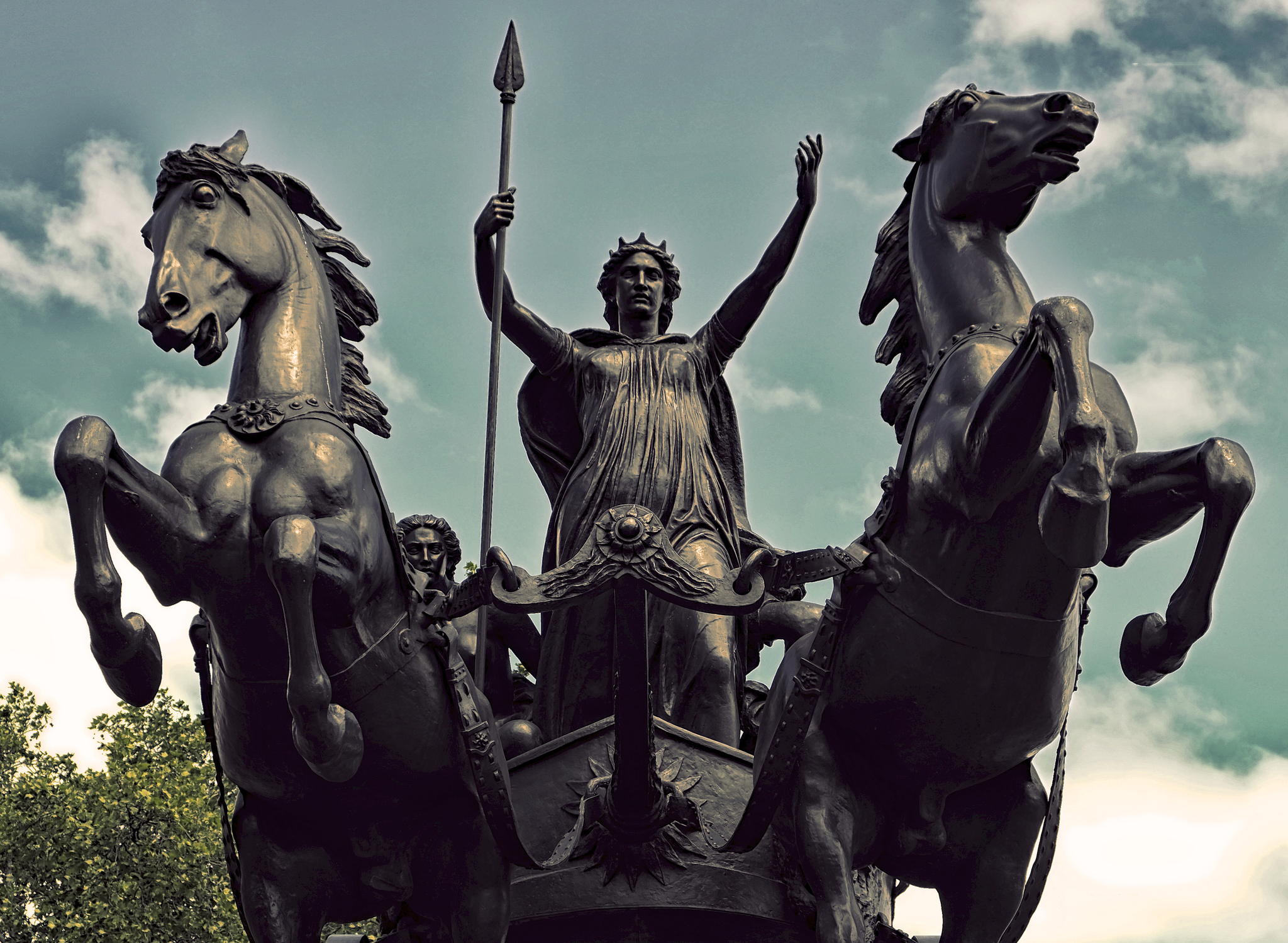Roman Britain
Back on the battle front, Casivellaunus was king of the Catuvellauni tribe and one of the prime movers behind the resistance to Julius Caesar the second time around. Casivellaunus was succeeded by a king named Caratacus, who provied to be much more of a thorn in Rome's side than Casivellaunus ever was. Rome had its way with many of the British tribal leaders, but Caratacus held his own for a few years, until the Romans finally bested him, at the Battle of Caer Caradoc, in Snowdonia, in A.D. 51. Caratacus escaped capture and fled north, to the kingdom of the Brigantes. That tribe at that time was ruled by a woman, the warrior queen Cartimandua. She wanted to find an ally in Rome, so she handed over Caratacus and Emperor Claudius gave her great wealth in return.
One of Nero’s administrators in Britain declared that the entire kingdom belonged to Rome. Boudicca resisted and was publicly flogged. The violence didn't stop there, though. Her daughters were brutally attacked as well. The Iceni didn't stand for this and enlisted other nearby tribes in a full-fledged revolt. Boudicca proved more than an inspiration, leading the troops into battle herself. This uprising was rather successful, claiming the annihilation of a legion and of three large settlements, Colchester, London, and Verulamium (now St. Albans) – all burned to the ground. Tacitus says that the Celts killed 70,000 Romans in this rampage. Boudicca's revolt was successful because it had numbers and the element of surprise. The revolt was also successful because the main Roman force was occupied elsewhere. The main Roman force at that time was engaging in a fierce battle to conquer the Druids, on the island of Anglesey, at the Battle of Mona. But once the military governor, Gaius Paullinus, left off subjugating the Druids and returned at the head of a large force of seasoned Roman soldiers, the Iceni revolt was over. The Battle of Watling Street is one of those that gets written up in the listings of the bloodiest battles ever, if the sources are to be believed. What the sources can't agree on (nor modern historians, for that matter) is exactly where this battle took place. The main source for this is Tacitus; his account of the battle says that the Roman commander, Paulinus, knew that he was outnumbered so chose the ground on which to fight and let the bloodthirsty Celts come to him. Part 4: Final battles |
|



 Nine years later, Rome faced down Britain's stiffest challenge, in the Iceni revolt, led by another warrior queen, Boudicca. Prasutagus, king of the Iceni tribe, had died. They certainly had wills back then, and the Roman historian Tacitus wrote that Prasutagus had, in his will, left half of his kingdom to his wife, Boudicca, and the other half of the kingdom to the Roman emperor, Nero, who had succeeded Claudius in 54.
Nine years later, Rome faced down Britain's stiffest challenge, in the Iceni revolt, led by another warrior queen, Boudicca. Prasutagus, king of the Iceni tribe, had died. They certainly had wills back then, and the Roman historian Tacitus wrote that Prasutagus had, in his will, left half of his kingdom to his wife, Boudicca, and the other half of the kingdom to the Roman emperor, Nero, who had succeeded Claudius in 54. 
